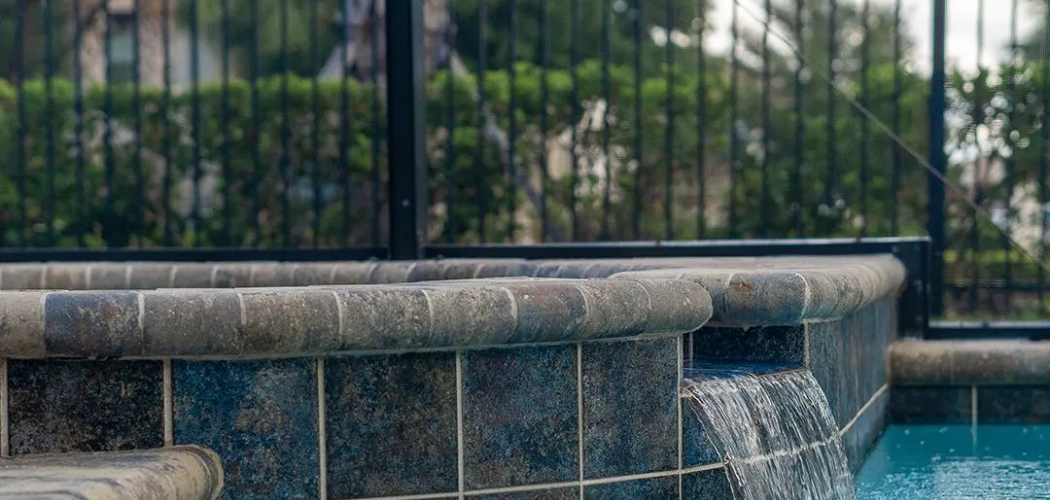Installing a pool safety fence is a critical step towards enhancing safety and preventing accidents, particularly for households with children or pets. These fences act as physical barriers, effectively restricting access to the pool area and reducing the risk of drowning incidents.
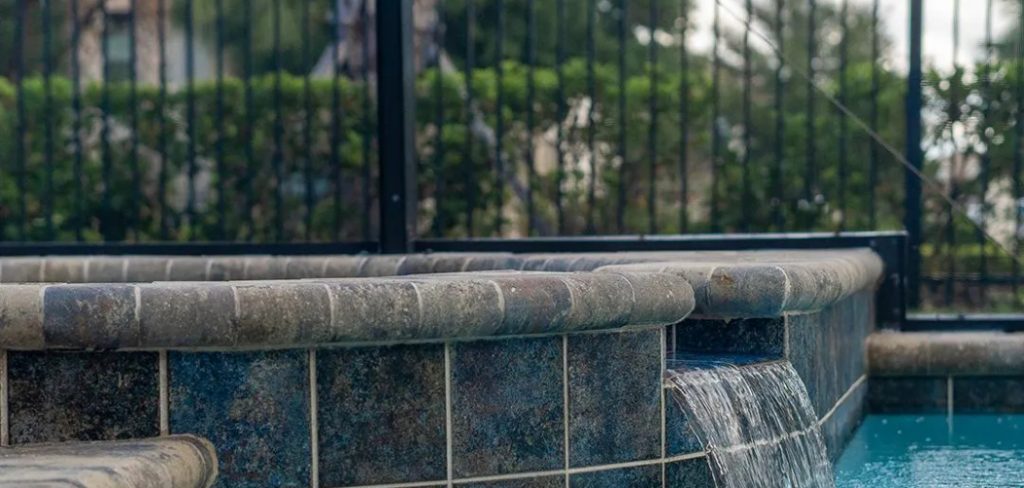
Proper installation involves selecting the appropriate type of fence—such as mesh, aluminum, or glass—that meets local safety regulations and complements the pool’s aesthetics and layout. Understanding the dimensions and layout of the pool area is essential for determining the placement of fence sections and gates.
By following precise installation guidelines, including securing fence posts firmly into the ground and ensuring gates are self-closing and latching, homeowners can create a secure and compliant pool environment.
This guide explores essential steps and considerations for how to install pool safety fence, promoting peace of mind and safety for families enjoying their poolside activities.
Importance of Pool Safety Fences
Pool safety fences are indispensable for ensuring a secure environment around swimming pools, particularly for families with young children or pets.
Drowning remains a leading cause of accidental death for children, and a well-installed pool fence can significantly mitigate this risk by preventing unsupervised access to the pool area.
Beyond the safety of children, these fences also offer protection for pets, reducing the likelihood of accidental falls into the water. Moreover, pool safety fences often become a mandated requirement by many local laws and regulations, underscoring their critical role in residential pool safety standards.
Additionally, a securely fenced pool can provide homeowners with peace of mind, knowing that they have implemented a robust measure to protect their loved ones. Investing in a quality pool safety fence is therefore not only a prudent decision but also a vital step in fostering a safe and enjoyable environment for all poolside activities.
Factors to Consider When Selecting a Fence
Choosing the right pool safety fence involves evaluating several crucial factors to ensure it meets both safety requirements and aesthetic preferences. Here are some key considerations:
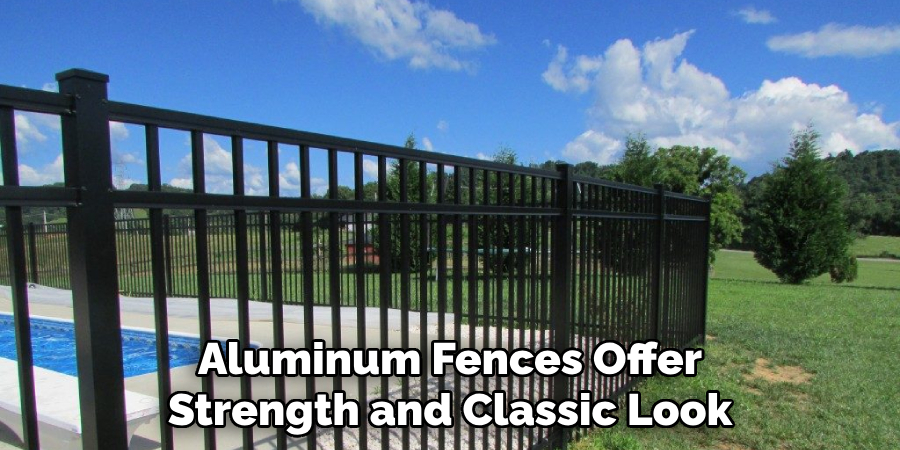
- Material: The materials used for pool safety fences—such as mesh, aluminum, vinyl, or glass—each have their unique advantages. Mesh fences are often preferred for their flexibility and durability, while aluminum fences offer strength and a classic appearance. Glass fences provide an unobstructed view of the pool area but can be more expensive and require regular cleaning.
- Height and Design: Safety standards typically recommend a pool fence height of at least 4 feet to effectively prevent climbing. The design should also feature vertical bars that are close enough together to prevent children or pets from squeezing through but spaced sufficiently to avoid creating a ladder effect.
- Gates and Locks: The fence should include self-closing and self-latching gates to ensure that the pool area remains secure at all times. Consider gates with childproof locks or alarms for an added layer of security.
- Local Regulations: It is vital to consult local building codes and regulations before selecting a pool fence. These guidelines will inform mandatory height, material, and installation requirements to ensure compliance with safety standards.
10 Methods How to Install Pool Safety Fence
1. Understand Local Regulations and Codes
Before starting your pool safety fence installation, it’s essential to understand and comply with local regulations and codes. Different municipalities have specific requirements for pool safety fences, including height, material, and gate specifications.
Research these regulations by visiting your local government’s website or contacting relevant authorities. Understanding and adhering to these rules will ensure your fence is not only safe but also compliant with legal standards, avoiding potential fines and complications.
2. Plan and Design Your Fence Layout
Planning the layout of your pool safety fence is a critical step. Start by measuring the perimeter of your pool area to determine the amount of fencing material you will need.
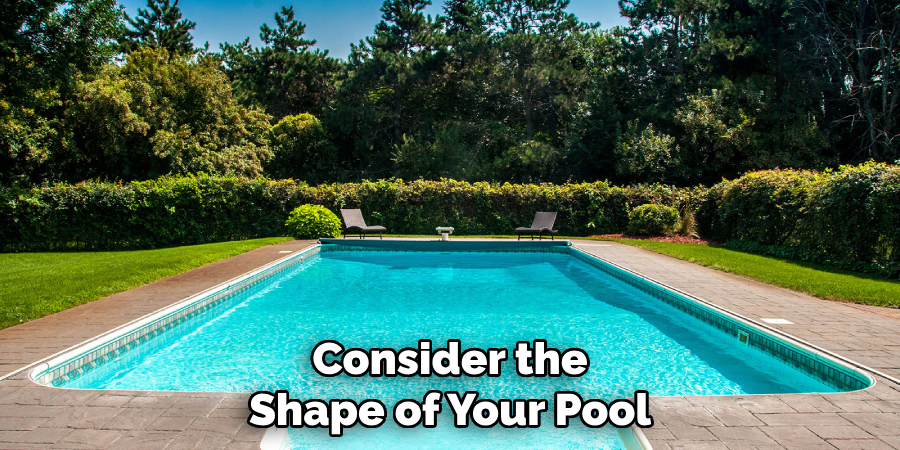
Consider the shape of your pool and any obstacles such as trees, landscaping, or existing structures. Sketch a layout plan, marking the positions for fence posts and gates. Ensure there is at least one gate for easy access, and plan for it to be self-closing and self-latching.
A well-thought-out design ensures that the fence will effectively enclose the pool area, providing maximum safety.
3. Choose the Right Materials
Selecting the right materials for your pool safety fence is crucial for durability and effectiveness. Common materials include mesh, aluminum, vinyl, and wood. Mesh fences are popular for their transparency and ease of installation, while aluminum and vinyl are durable and require minimal maintenance.
Wood fences offer a classic look but may require more upkeep. Ensure the materials are weather-resistant and sturdy enough to withstand wear and tear. The choice of materials will impact the fence’s longevity, appearance, and effectiveness in keeping the pool area secure.
4. Prepare the Installation Site
Preparing the installation site is essential for a smooth and effective fence installation. Clear the area around the pool of any debris, plants, or obstacles that might interfere with the fence placement.
Mark the locations for the fence posts according to your layout plan. Use stakes and string to outline the fence’s path, ensuring it forms a continuous barrier around the pool. Proper site preparation ensures that the fence will be installed securely and evenly, providing reliable protection.
5. Install the Fence Posts
The installation of fence posts is a critical part of building a sturdy and reliable pool safety fence. Start by digging holes for the posts at the marked locations. The depth of the holes should be sufficient to provide stability, typically around 18 to 24 inches deep.
Place the posts in the holes and fill them with concrete or gravel for added stability. Ensure the posts are level and evenly spaced according to your layout plan. Allow the concrete to cure fully before proceeding. Properly installed fence posts form the backbone of your safety fence, ensuring it is strong and durable.
6. Attach the Fence Panels
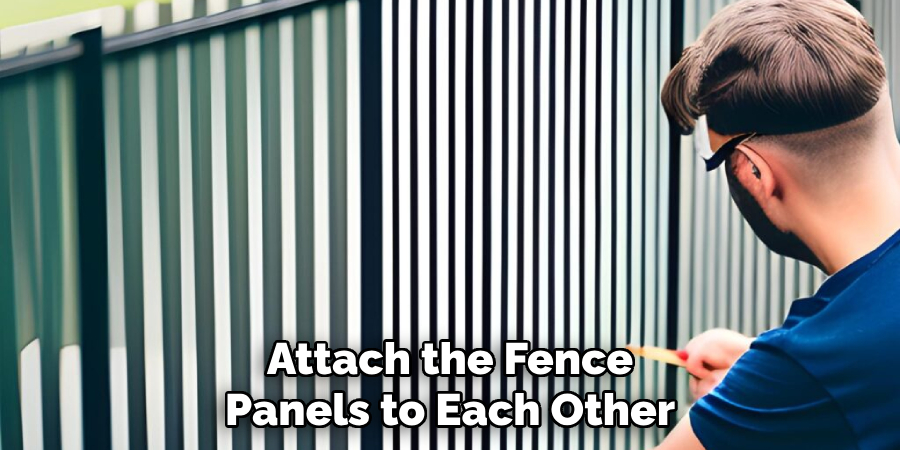
Once the posts are securely in place, attach the fence panels to them. Follow the manufacturer’s instructions for attaching the panels, ensuring they are level and securely fastened.
Use appropriate hardware such as screws or brackets to attach the panels to the posts. For mesh fences, ensure the mesh is taut and free of sagging. For solid panels, ensure there are no gaps that could allow children or pets to slip through.
Attaching the panels correctly ensures the fence forms a continuous barrier, providing effective protection around the pool area.
7. Install the Gate
The gate is a crucial component of your pool safety fence, providing controlled access to the pool area. Choose a self-closing and self-latching gate to ensure it closes automatically after each use, reducing the risk of accidental entry.
Install the gate according to the manufacturer’s instructions, ensuring it is level and operates smoothly. The latch should be placed out of reach of young children, typically at least 54 inches from the ground. Test the gate to ensure it closes and latches securely.
A properly installed gate enhances the effectiveness of the fence, providing a reliable entry and exit point.
8. Ensure Proper Height and Gap Specifications
Adhering to proper height and gap specifications is crucial for the safety and effectiveness of your pool fence. Most local regulations require pool fences to be at least 4 feet tall, with no gaps larger than 4 inches.
This prevents children from climbing over or squeezing through the fence. Measure the height of the fence at various points to ensure it meets the required standards. Check for gaps between the panels and the ground, and adjust as necessary.
Ensuring the fence meets height and gap specifications provides a secure barrier that effectively prevents unauthorized access to the pool area.
9. Secure the Bottom of the Fence
Securing the bottom of the fence is essential to prevent children or pets from crawling underneath. Depending on the terrain and fence material, you may need to bury the bottom of the fence slightly or use additional hardware to secure it to the ground.
For mesh fences, use ground sleeves or anchors to keep the bottom taut and secure. For solid panels, ensure they are flush with the ground or use additional boards to close any gaps. Properly securing the bottom of the fence ensures there are no weak points, enhancing the overall safety and effectiveness of the barrier.
10. Regular Maintenance and Inspection
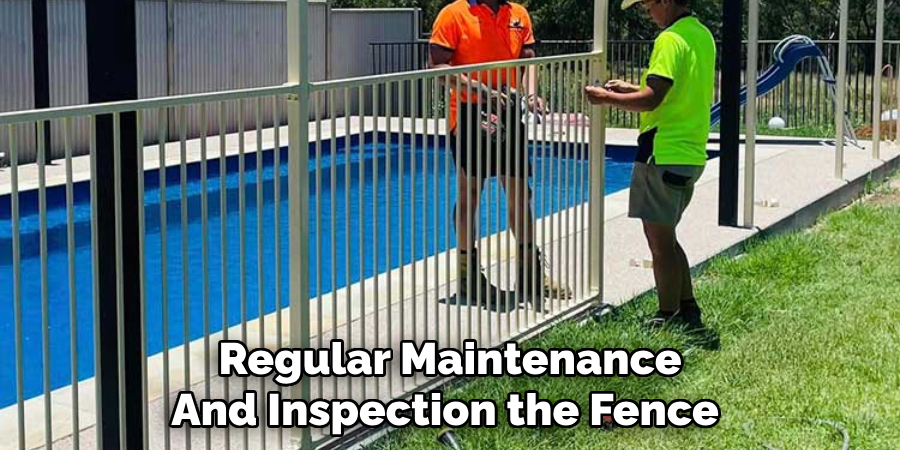
Regular maintenance and inspection are crucial for ensuring the ongoing effectiveness of your pool safety fence. Periodically check the fence for any signs of damage or wear, such as loose panels, rust, or broken posts.
Test the gate to ensure it closes and latches properly. Clean the fence to remove dirt, debris, and any potential hazards. Address any issues promptly to maintain the fence’s integrity and safety. Regular maintenance ensures that the fence continues to provide reliable protection, preventing accidents and unauthorized access to the pool area.
Conclusion
In conclusion, installing a pool safety fence involves careful planning, selecting appropriate materials, and meticulous installation to ensure maximum safety and compliance with local regulations.
Start by understanding the purpose and regulations related to pool safety fences, then plan and design your fence layout. Choose durable and weather-resistant materials, prepare the installation site, and install the fence posts securely. Thanks for reading, and we hope this has given you some inspiration on how to install pool safety fence!

